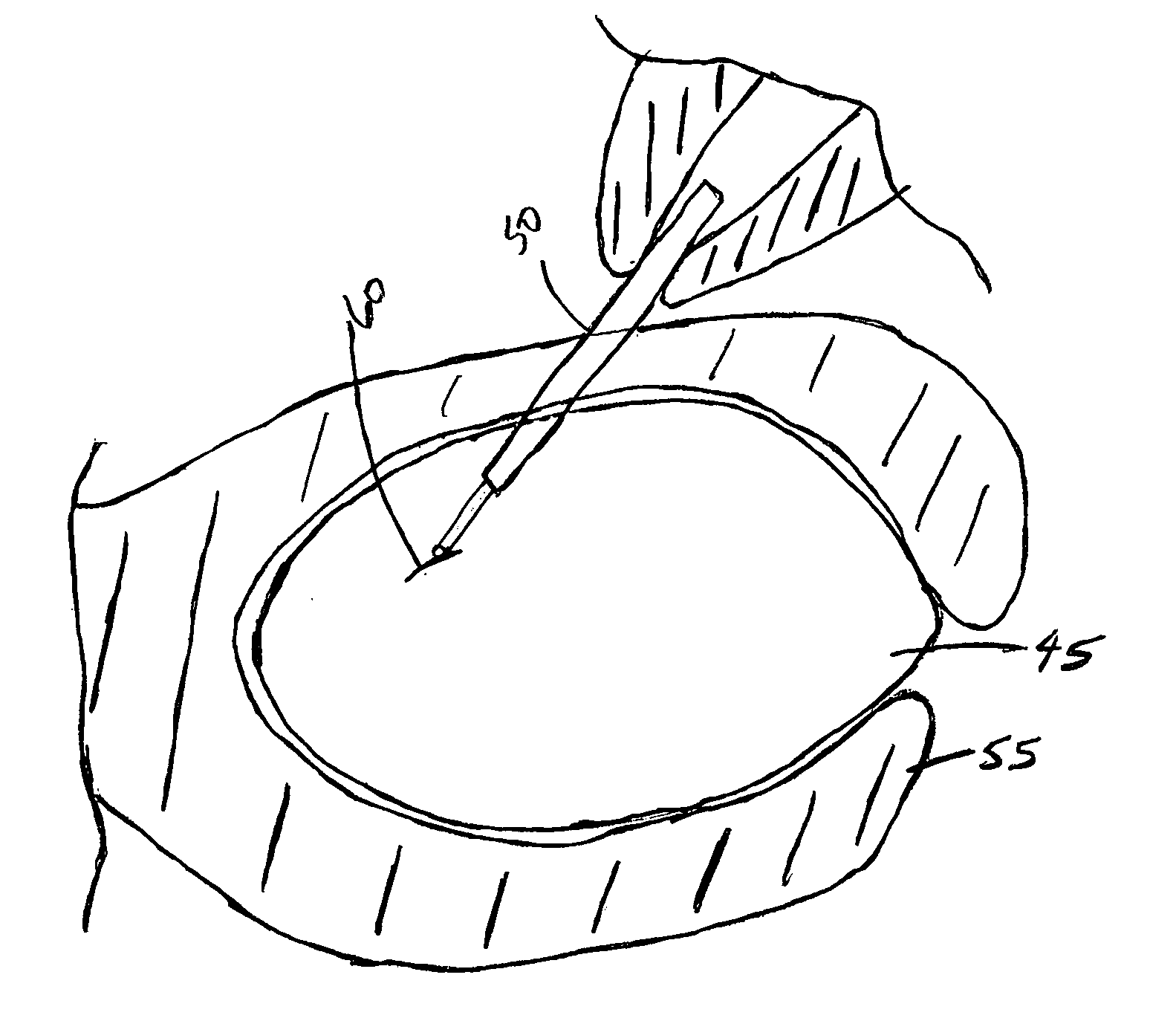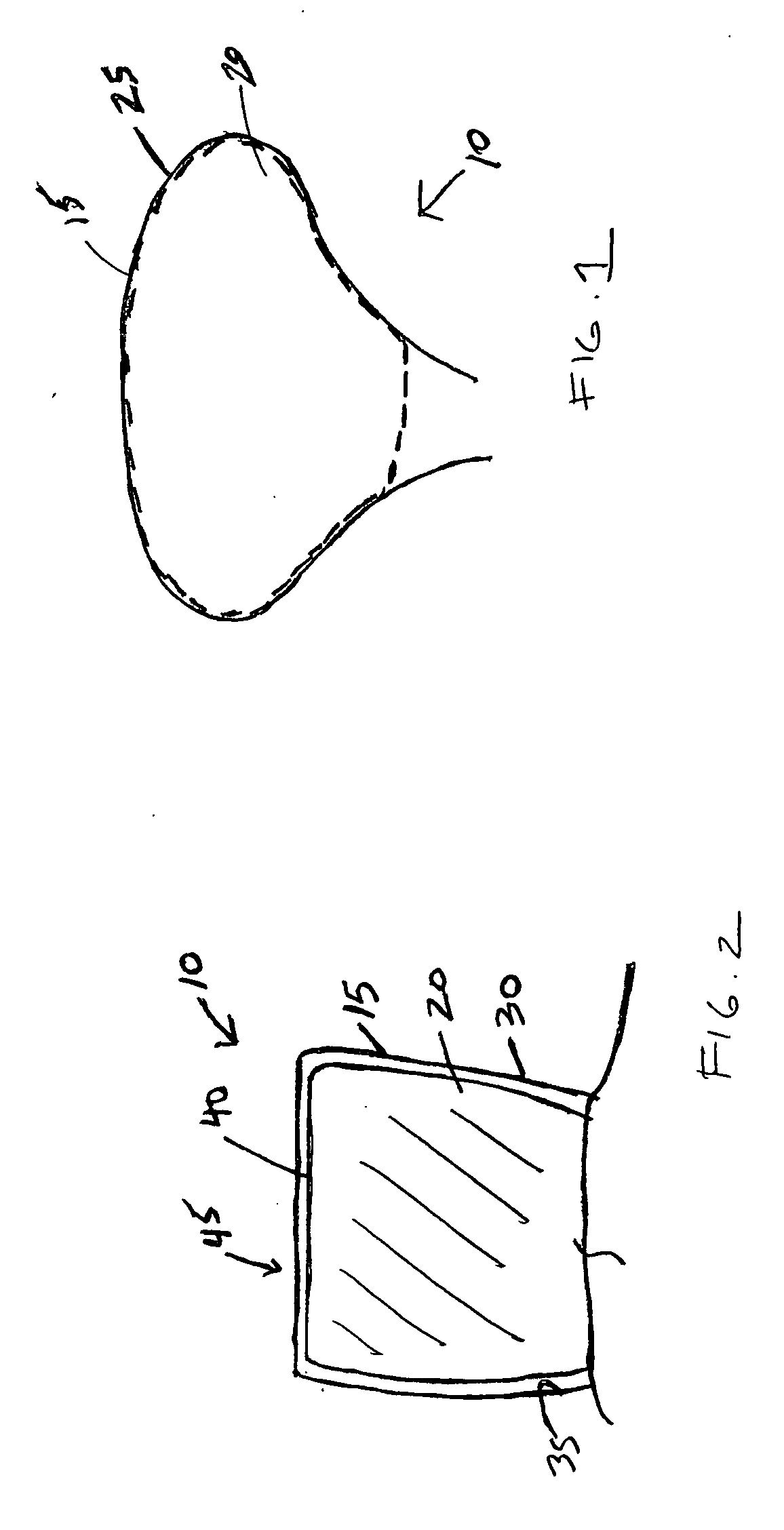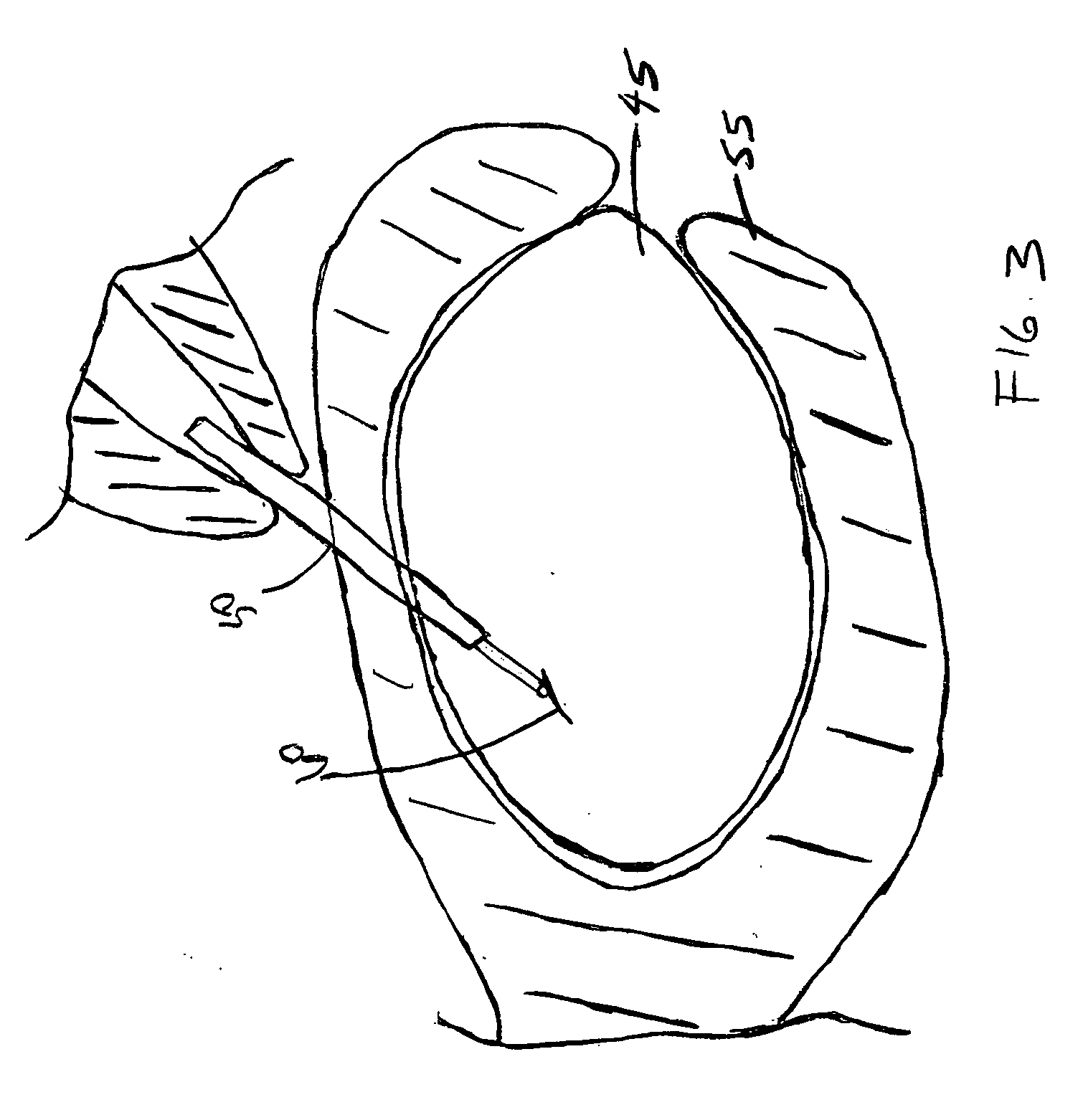Apparatus for practicing ophthalmologic surgical techniques
a technology for ophthalmologic surgery and apparatus, applied in educational appliances, educational models, instruments, etc., can solve the problems of inability to learn and become proficient with the techniques, the acquisition and disposal of eyes, and the steep learning curve of microsurgery in the form of phacoemulsification, etc., and achieve the effect of simple and elegan
- Summary
- Abstract
- Description
- Claims
- Application Information
AI Technical Summary
Benefits of technology
Problems solved by technology
Method used
Image
Examples
Embodiment Construction
[0035] Referring to FIG. 1-4, there is illustrated an apparatus 10 for practicing surgical techniques for the eye. This apparatus 10 is comprised of a cover 15, which is substantially wrapped around a body 20, to provide a surgical training surface to mimic the human anterior lens capsule for surgical techniques, including but not limited to the continuous curvilinear capsulorhexis (“CCC”) procedure, common to modern cataract surgery.
Cover (15)
[0036] The cover 15 is wrapped tightly around the body 20 to accurately mimic the physical feel and touch of the human eye anatomy, namely the anterior lens capsule over the lens.
[0037] This cover has at least one surface 25 and may also have a first or outer surface 30 and a second or inner surface 35. The cover should be able to mimic the “physical feel and touch” of tearing the human anterior lens capsule in the “CCC” procedure. The cover can also be referred to as a membrane, sheath, tissue, or working surface.
[0038] This cover can be...
PUM
 Login to View More
Login to View More Abstract
Description
Claims
Application Information
 Login to View More
Login to View More - R&D
- Intellectual Property
- Life Sciences
- Materials
- Tech Scout
- Unparalleled Data Quality
- Higher Quality Content
- 60% Fewer Hallucinations
Browse by: Latest US Patents, China's latest patents, Technical Efficacy Thesaurus, Application Domain, Technology Topic, Popular Technical Reports.
© 2025 PatSnap. All rights reserved.Legal|Privacy policy|Modern Slavery Act Transparency Statement|Sitemap|About US| Contact US: help@patsnap.com



